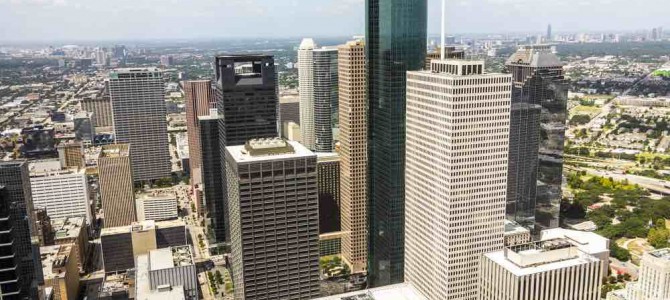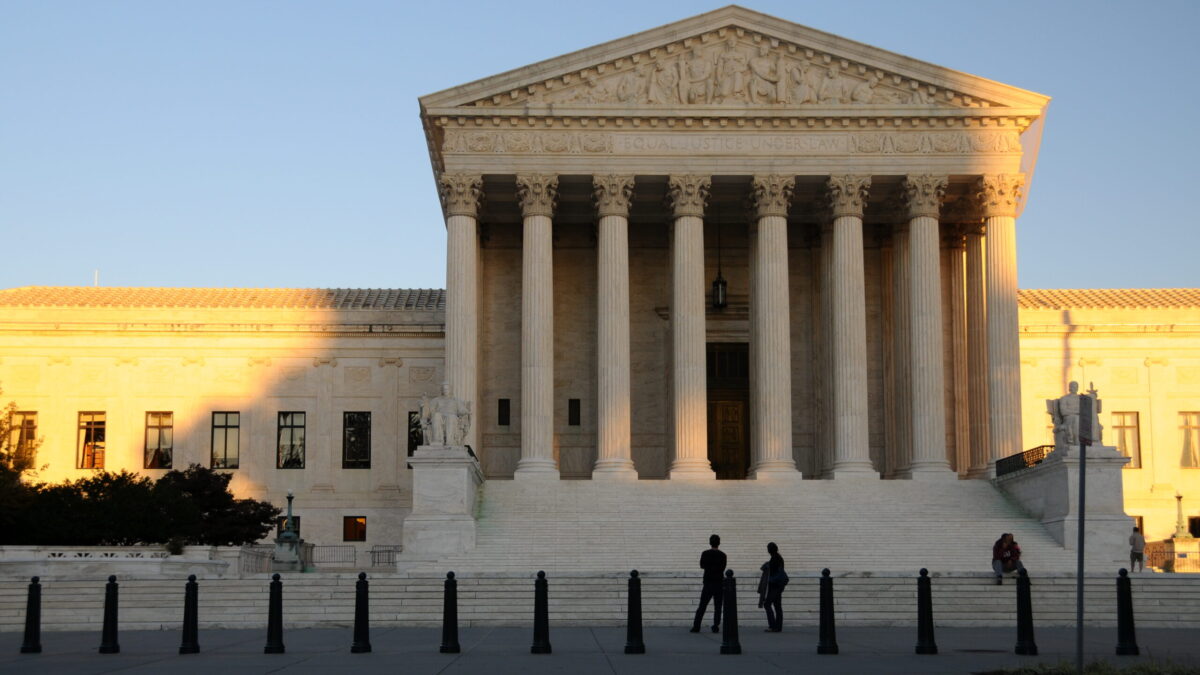
Houston, Texas — When traveling through America’s foremost boomtown, the atmosphere of change quickly becomes evident, from new buildings to added traffic. But one can’t truly appreciate this growth until on a balcony. So there I was one December evening in 2015 atop a high-rise, watching the sun set over Houston. My view was of an urban core that, contrary to its reputation, has become dense, global, and cosmopolitan. The panorama conveyed, moreover, growth that has been driven not by government centralization, but a laissez-faire mentality.
From 2000 to 2010, Houston was the nation’s fastest-growing metro area, adding 123,000 people annually. With an estimated population of 2.2 million, it could soon surpass Chicago as America’s third-largest city. The main reason for the boom is Houston’s oil industry, but includes a broader pro-growth policy blueprint.
Low taxes—highlighted by no Texas state income tax—have attracted corporations to the metro, including 26 Fortune 500s. Houston has made smart infrastructure investments, like port and highway expansion. Its openness towards immigrants draws worldwide talent. Houston has accommodated this population influx through land-use deregulation, particularly in lacking a zoning code.
Not One, But Multiple Downtowns
The longstanding criticism is that this unfettered growth has produced one big, tacky suburb, with a downtown so empty that tumbleweeds roll past. A more accurate portrayal would be that Houston is a traditionally sprawling city that now also accommodates, thanks to liberalized policies, many core-dwelling urbanites.
Perhaps nobody has seen these changes like Tory Gattis, who was sharing his balcony with me that evening. Gattis is a fellow at the Center for Opportunity Urbanism, a Houston-based, pro-growth think tank for which I’m writing a report about San Antonio. He grew up in Houston’s suburbs, attended nearby Rice University, and blogs on local policy. His condo, located in trendy Midtown, abuts the central business district, and overlooks much of east, south, and west Houston.
Pointing outwards, Gattis noted how variated Houston’s growth has been. Rather than one downtown, there are a half-dozen clusters throughout the metro. To the west is the Galleria, a wall of towers that contains one of America’s largest malls. To the south is the world’s largest medical cluster, called the Texas Medical Center. In between are neighborhoods that are rapidly densifying via townhomes, mid-rises, and the occasional stand-alone skyscraper—the latter of which is rare in heavily-regulated cities.
“[Skyscrapers] can sprout up anywhere,” said Gattis. “They’re not forced into very specific districts.” Elsewhere in Houston, he says, “developers have torn down old houses and put three or four townhomes on the same lot.” From above, he pointed to large west-side pockets that were dominated by these newly built structures, including throughout Montrose and Rice Military.
Texas-Sized Amenities
Gattis later drove me through these neighborhoods, which together have made Houston more cultured and intensive than when I last visited in 2007. The three U.S. cities bigger than Houston—New York, Los Angeles, and Chicago—get more press as destinations. But Houston has its own array of noted amenities. The city now has what’s considered one of America’s best restaurant scenes. It has the largest downtown theater district outside of New York City. It also contains numerous other Texas-style superlatives, from the world’s biggest rodeo to one of the largest liquor stores.
Gattis took me into one grocery store, the locally famous Central Market, that surpassed in size and variety anything I’ve ever seen. For luxury shopping, the Galleria used to be Houston’s main destination, and still is to foreign visitors. But locals can now find similar stores less than a mile away in various upscale strip malls. Perhaps most importantly, this growth has made many areas walkable, including the nightlife zone around Gattis’ loft.
Even more than physical signs of urbanization, though, are human ones. Houston consistently appears on lists of the best cities for young professionals, a demographic essential for economic and cultural growth. It is also America’s most diverse metro area, with more than one-fifth of residents foreign-born. It is impossible not to notice this global imprint when visiting, from the Asian groceries lining the freeways to the Caribbean beats thumping from the radio.
Low Taxes and Regulations Foster Vibrancy
“We have a certain vibrancy and authenticity, especially in the core,” says Gattis, “that is actually getting harder and harder to find in those big-name cities.”
He meant low taxes and regulations have helped Houston remain affordable, making it a place where foreign and domestic young people can move. Median home values here, according to Zillow, are only $144,900. In cities like New York and San Francisco, meanwhile, the direct and indirect costs of government have made life too expensive for many. Restrictive zoning regulations, in particular, have prevented the infill growth that goes up practically overnight in Houston.
Of course, Houston still has problems. While the human influx has diversified its economy, the city still depends excessively on the oil industry, meaning global price fluctuations wreak local havoc. Houston is also becoming infiltrated by the machine politics long typical in other big cities. Employee pension obligations, for example, consume 20 percent of the general fund, stripping from core services.
Gattis says this is one reason that Houston, already faced with the strain of rapid population increases, has deteriorating roads and under-staffed police. Despite this, voters last year elected for mayor Democrat Sylvester Turner, a longtime state representative with public union leanings.
But the current problems don’t detract from the growth Houston has already enjoyed, nor the message this growth sends to planners and officials. According to their folk wisdom, cities become dense and cosmopolitan through top-down management—aka “smart growth.” Houston, however, shows that organic market growth is what really fills cities with people and culture.








